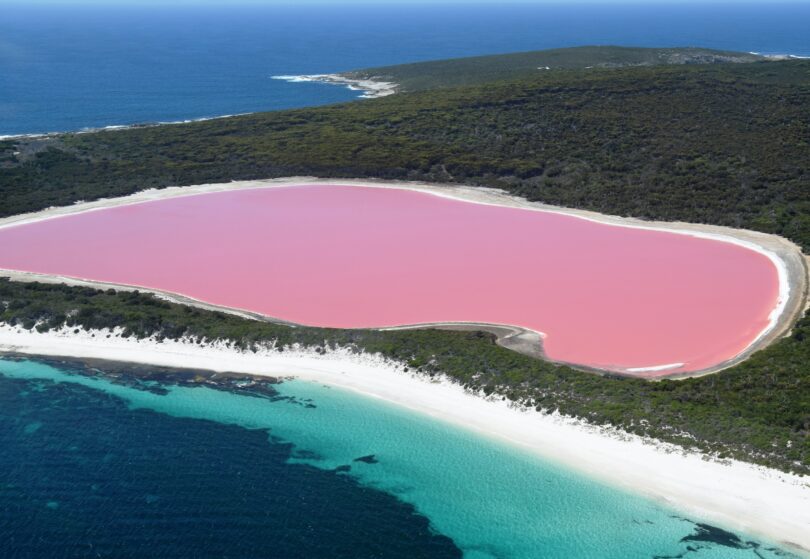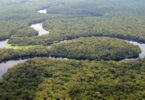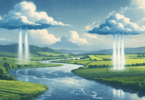There’s something magical about the sight of a lake shimmering in shades of pink, with its vibrant hue standing out against the surrounding natural beauty. These so-called “pink lakes” are one of nature’s most surprising and colorful secrets. They’re not only a wonder to behold but also a fascinating subject of study. But what makes these lakes pink? How do they get their stunning color? Let’s dive into the science behind these natural phenomena and explore some of the world’s most famous pink lakes.
What Are Pink Lakes?
Pink lakes, as the name suggests, are bodies of water that have a distinct pink or reddish hue. While they may look like they belong in a fairy tale, they’re very real and can be found in various parts of the world. These lakes are typically saltwater, and their pink color comes from the presence of specific microorganisms and algae that thrive in high-salinity environments.
The Science Behind the Pink Color
The color of these lakes is primarily due to a pigment produced by Dunaliella salina, a type of algae that thrives in saline environments. When the conditions are right—high salt content, warm temperatures, and plenty of sunlight—these algae produce a red pigment called beta-carotene, which gives the water its vibrant pink color. The high salt levels prevent most fish and plants from surviving, allowing the algae to flourish and create this stunning natural spectacle.
But it’s not just one type of organism that causes the pink color. Some pink lakes also feature Haloarchaea, a type of salt-loving bacteria, which can further enhance the vivid color by producing pigments that reflect red or orange hues when exposed to sunlight.
Famous Pink Lakes Around the World
- Lake Hillier (Australia) Lake Hillier is probably the most famous pink lake in the world, and for good reason. Located on Middle Island off the coast of Western Australia, this lake’s bubblegum-pink water is a striking sight against the island’s green vegetation and surrounding blue ocean. What’s fascinating about Lake Hillier is that its pink color remains constant, whether you’re looking at it from a plane or from the ground.
- Laguna Colorada (Bolivia) Laguna Colorada, located in Bolivia’s Eduardo Avaroa National Park, is a shallow salt lake that has a reddish-pink hue, often caused by algae and plankton rich in beta-carotene. The lake is surrounded by striking mountains and is home to large populations of flamingos, which feed on the algae.
- Lake Retba (Senegal) Known locally as Lac Rose, Lake Retba in Senegal is famous for its vibrant pink color, especially during the dry season when the concentration of salt and algae is at its highest. This lake is a significant source of salt for local communities, and workers often harvest salt from the lake’s surface, adding an industrial touch to its stunning natural beauty.
- Spencer Lake (New Zealand) In the remote areas of New Zealand, Spencer Lake has earned a reputation for its otherworldly pink color. The lake’s unusual hue is the result of algae and bacteria that thrive in the saline waters, creating a soft, pastel pink that contrasts beautifully with the surrounding mountains.
Why Do Pink Lakes Change Color?
Pink lakes can change color depending on several factors. In some lakes, the color deepens or fades in response to fluctuations in temperature, sunlight, and the salt content of the water. Seasonal changes also play a role, as higher temperatures in summer encourage the algae to produce more pigment, making the water appear even pinker.
The color can also vary depending on the specific microbial life present in the lake. For example, in the case of Lake Retba, the algae that cause the lake to turn pink are more concentrated during the dry season, leading to more intense color during that time.
The Ecological Importance of Pink Lakes
While pink lakes are visually striking, they also play an important role in the ecosystem. The high salinity and unique conditions in these lakes create an environment where only specialized organisms can survive. The algae and bacteria that thrive in pink lakes are part of a delicate ecosystem that helps maintain the balance of life in these extreme environments.
Additionally, pink lakes often attract a variety of wildlife, including migratory birds like flamingos, which feed on the algae that thrive in these waters. Some pink lakes also provide vital resources for local communities, such as salt harvesting, making them valuable both environmentally and economically.
How to Visit a Pink Lake
If you’re planning to see a pink lake in person, you’ll need to do some research beforehand. Some lakes, like Lake Hillier, are located in remote areas and are difficult to access, while others, like Lake Retba, are more easily accessible and open to tourists. Many pink lakes also have protected statuses, so be sure to follow local regulations and respect the delicate environments.
Conclusion
Pink lakes are truly one of nature’s most stunning and mysterious wonders. They remind us of the beauty and complexity of the natural world, and how even the most unusual phenomena can arise from a delicate balance of environmental factors. Whether you’re fascinated by science, photography, or just the beauty of nature, a visit to one of these colorful lakes should be on your bucket list.









